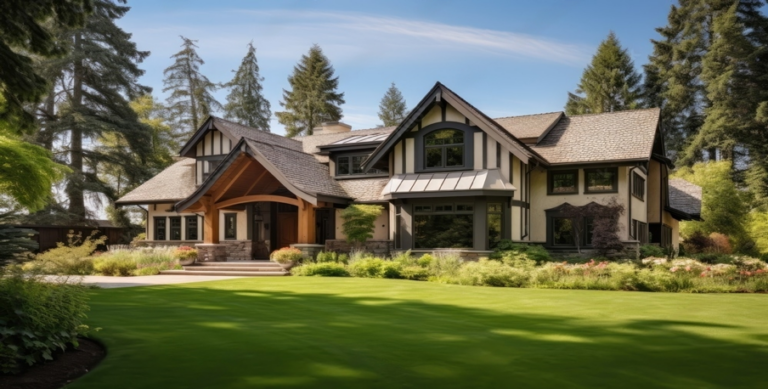Green Mortgages

In an era defined by environmental consciousness and sustainable living, the demand for eco-friendly homes is on the rise. As the world grapples with climate change, individuals are increasingly seeking ways to reduce their carbon footprint, including in the place they call home. This paradigm shift has given birth to the concept of “Green Mortgages,” a financial tool that aligns the dream of homeownership with a commitment to sustainability.
In this article, we will explore the growing demand for eco-friendly homes and how lenders can play a pivotal role in supporting environmentally conscious borrowers through innovative Green Mortgage initiatives. A case study will also be highlighted.
The Rise of Eco-Friendly Living
The urgency of climate change and a heightened awareness of environmental issues have prompted a shift in consumer preferences towards sustainable living. Today’s homebuyers are not only interested in the number of bedrooms and bathrooms but also in the energy efficiency, eco-friendly features, and overall environmental impact of their prospective homes. This trend is evident in the growing popularity of LEED-certified (Leadership in Energy and Environmental Design) and Net-Zero Energy homes, which minimize energy consumption and environmental impact.
Understanding Green Mortgages
Green Mortgages have emerged as a response to this shift in consumer values. These mortgages incentivize and reward homebuyers for choosing environmentally friendly properties. Lenders offering Green Mortgages provide discounted interest rates, lower fees, or additional financing options for homes that meet specified green criteria. This not only benefits the borrower by reducing the cost of homeownership but also contributes to a more sustainable future by promoting the construction and renovation of eco-friendly homes.
Supporting Environmentally Conscious Borrowers
Lenders can take several steps to support environmentally conscious borrowers:
Offering Preferential Terms: Provide reduced interest rates or favorable loan terms for homes with green certifications or energy-efficient features.
Educational Initiatives: Conduct workshops and provide resources to educate borrowers on the benefits of green homeownership, including long-term cost savings and reduced environmental impact.
Collaboration with Green Builders: Form partnerships with builders and developers who specialize in eco-friendly construction, creating a network of sustainable housing options for borrowers.
Incentives for Energy-Efficient Upgrades: Encourage borrowers to make energy-efficient upgrades post-purchase by offering incentives or financing options for home improvements that enhance sustainability.
Case Study: Fannie Mae’s Green Financing Program
In the United States, Fannie Mae, a government-sponsored enterprise that plays a central role in the secondary mortgage market, has been at the forefront of promoting sustainable and energy-efficient homes through its innovative green financing programs. Fannie Mae’s commitment to environmental sustainability is reflected in its Green Financing solutions, designed to incentivize and support borrowers and multifamily property owners in making energy-efficient choices.
Background:
Fannie Mae launched its Green Financing program in 2012 with the goal of providing financial incentives to property owners who invest in energy and water efficiency improvements. The program is part of Fannie Mae’s broader effort to address environmental concerns, promote sustainable practices, and reduce the overall carbon footprint of its financed properties.
Key Components of Fannie Mae’s Green Financing Program
- Green Rewards – Fannie Mae offers Green Rewards to borrowers who commit to making their multifamily properties more energy-efficient. The program provides lower interest rates and additional loan proceeds to finance energy and water efficiency upgrades.
- Green Building Certification – Fannie Mae recognizes and supports various green building certifications, such as ENERGY STAR® for multifamily properties. Borrowers can qualify for green financing benefits by achieving and maintaining these certifications.
- Energy and Water Audit Reports – To qualify for Green Financing, borrowers are required to conduct energy and water efficiency audit reports. These reports help identify potential improvements and quantify the expected energy and water savings, providing a roadmap for property upgrades.
Success Story: Cambridge Plaza Apartments, California
One notable case under Fannie Mae’s Green Financing program is the Cambridge Plaza Apartments, a multifamily property in San Diego, California. The property owners, in collaboration with Fannie Mae, undertook a comprehensive energy and water efficiency retrofit to qualify for Green Rewards.
Project Highlights
Energy-Efficient Upgrades: The Cambridge Plaza Apartments implemented a range of energy-efficient measures, including the installation of solar panels, LED lighting, and high-efficiency HVAC systems.
Water Conservation: The property incorporated water-saving technologies, such as low-flow faucets and fixtures, and upgraded landscaping to reduce water consumption.
Financial Benefits: As a result of these upgrades, the property qualified for Fannie Mae’s Green Rewards, which translated into lower interest rates and increased loan proceeds. The financial benefits helped offset the upfront costs of the improvements.
Outcomes
The Cambridge Plaza Apartments not only reduced its environmental impact but also experienced tangible financial benefits. The property’s energy and water bills decreased significantly, contributing to long-term operational cost savings. Moreover, the enhanced sustainability of the property positively influenced tenant satisfaction and retention.
Lessons for Mortgage Professionals
Fannie Mae’s Green Financing program serves as a compelling case study for mortgage professionals in the U.S. It demonstrates how financial institutions can play a pivotal role in promoting sustainable practices within the real estate sector. By offering financial incentives for green improvements, lenders can encourage borrowers to invest in energy-efficient and environmentally friendly features, contributing to a more sustainable and resilient housing market. The success of initiatives like Fannie Mae’s Green Financing program underscores the potential for green mortgages to create positive outcomes for both borrowers and the environment.
Looking Ahead: A Greener Future for Mortgage Lending
As the demand for eco-friendly homes continues to grow, Green Mortgages have the potential to reshape the landscape of homeownership. Lenders who proactively embrace this trend and adapt their offerings to meet the desires of environmentally conscious borrowers will not only contribute to a sustainable future but also position themselves as leaders in responsible and innovative finance.
